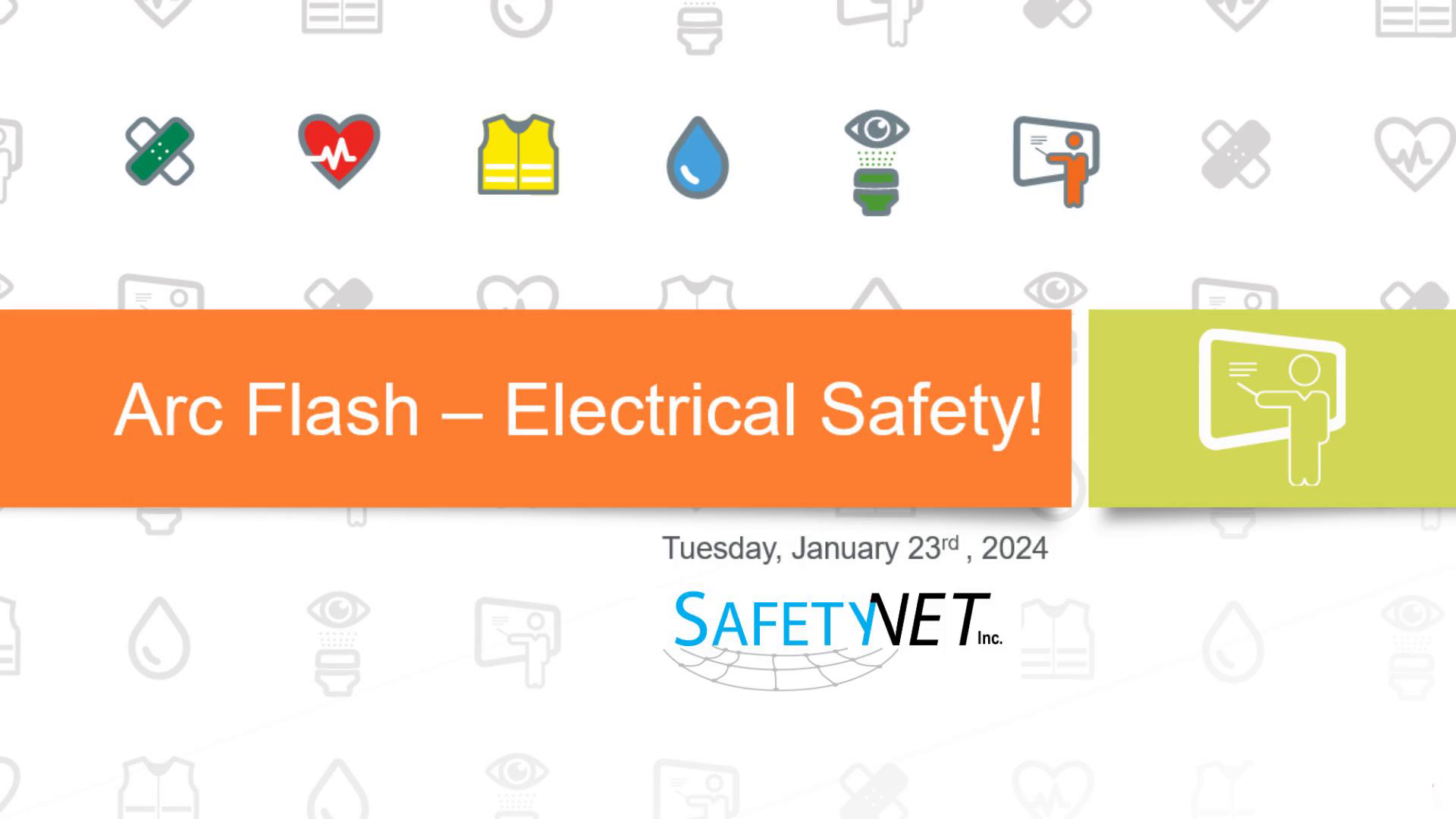Scene 1 (0s)
[Virtual Presenter] Thank you for joining us today for this presentation SafetyNet inc and her offerings for NFPA 70 E compliance.
Scene 2 (10s)
[Audio] At SafetyNet we'd like to say we take a holistic approach to actively manage your safety program. What we mean by this is that whatever we do for art flash safety we make sure that it is practical and feasible.. The main point is that we want to eliminate electrical accidents, injuries, and even death.
Scene 3 (32s)
[Audio] So What is required for NFPA 70E warning labels and updated arc flash labels must be at all electrical panels They must be reviewed every three years.
Scene 4 (50s)
[Audio] Training - At Least every three years unless inspections, behaviors, changes in equipment and technology or changes in job duties require it to be retaken more frequently! Permits shall be kept for a minimum of three years in order to be used as part of the audit process. 11.16 A copy of the NCSU Energized Electrical Work Permit .. The Audit there are essentially two requirements. Some of them come from OSHA, some come from NFPA 70E. There's also a, what OSHA would call, "regular supervision". That's all part of the process, but the auditing process exists on two levels. There's a three-year review process of the 70E requirement, but there's also an annual requirement under OSHA for auditing the program. And what we're auditing the program for is the effectiveness. That's the key part of what we're trying to accomplish. It's not good enough to have a state of the art program. It's also got to be effectively implemented and so there's an annual audit requirement under OSHA for that. Then there's the NFPA 70E requirement, which has a three or cyclical requirement for reviewing the document itself. And OSHA has what they call regular supervision, and this means that OSHA expects a supervisor to observe the work on a daily basis. They're supposed to see their supervisor observe the work on a daily basis. And what the supervisor is looking for is not only to correct unsafe behavior or to congratulate good behavior but also to verify if the system is effectively doing whatever it's trying to do. So for example, energy control, lockout tag out, you have to have a process to verify that the process is effectively controlling on unexpected releases of energy. So it exists on different levels, the OSHA as well as the 70E..
Scene 5 (2m 51s)
[Audio] Fines for Underlying Issues: Even with proper NFPA 70E labeling, OSHA can cite for underlying electrical safety problems. This could include: Lack of proper training for electrical work. Deficiencies in hazard assessment and risk control. Unsafe work practices observed by inspectors. Inappropriate or inadequate Personal Protective Equipment (PPE) for electrical work..
Scene 6 (3m 21s)
[Audio] Fatal injury Inspection Nr: 1705435.015 $11,292 Employee Is Killed In Arc Flash While Troubleshooting Switch OSHA and NFPA. Require you to post warning signs, advise employees of the location of the circuit, hazards, and protective measures they needed to take before beginning work.
Scene 7 (3m 51s)
[Audio] OSHA doesn't have specific regulations requiring arc flash labels, their standards do address electrical safety and the need for labels. General Electrical Safety: OSHA's Subpart S [29 CFR 1910.303(e)] requires employers to mark electrical equipment with informative labels including voltage, current, wattage or other relevant ratings.
Scene 8 (4m 22s)
[Audio] NFPA 70E is not directly enforceable by OSHA: It's a widely recognized standard, but not a law. OSHA has its own electrical safety regulations in Subpart S of 1910.303-1910.399. Focus is on Hazards and Worker Protection: While NFPA 70E guides electrical safety practices, OSHA prioritizes identifying and mitigating electrical hazards themselves..
Scene 9 (4m 55s)
[Audio] General Sign and Tag Requirements: Signs and tags must be used to warn employees about potential hazards and unsafe practices. They should be easily understandable by all employees, potentially requiring multilingual versions if necessary..
Scene 10 (5m 17s)
[Audio] OSHA 1910.303(b)(1) Examination. Electric equipment shall be free from recognized hazards that are likely to cause death or serious physical harm to employees.
